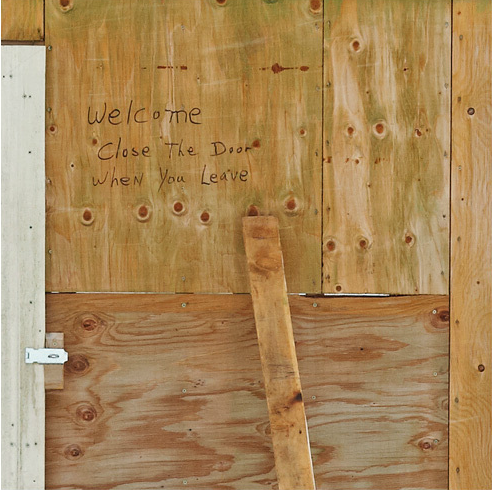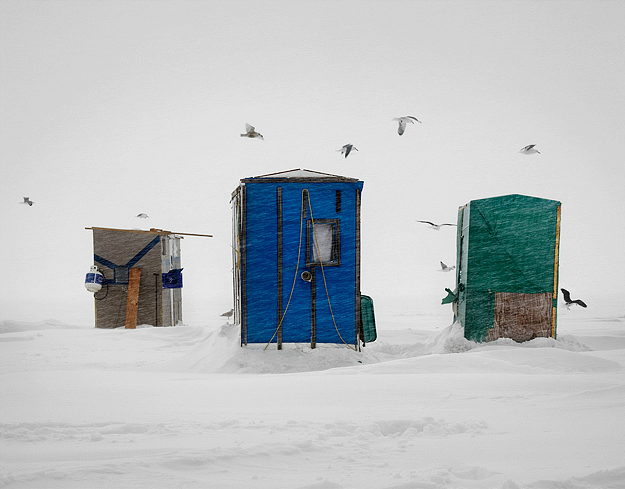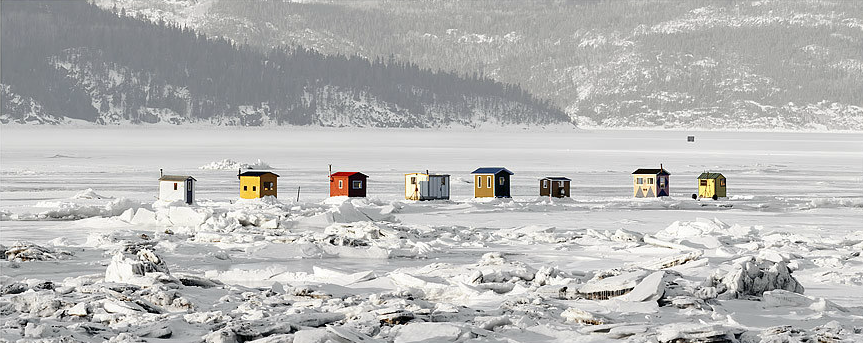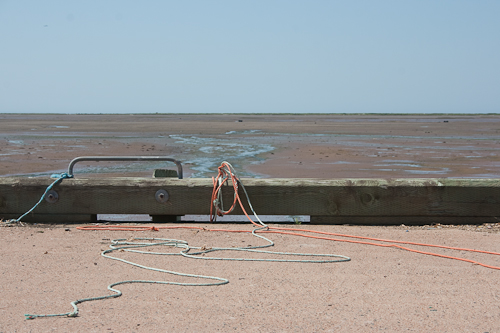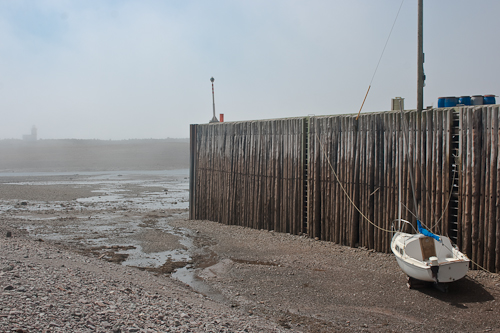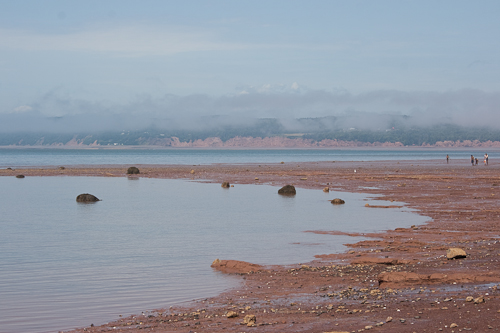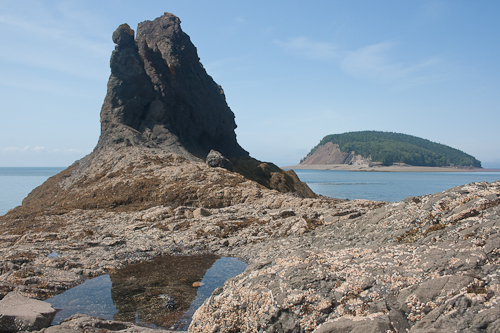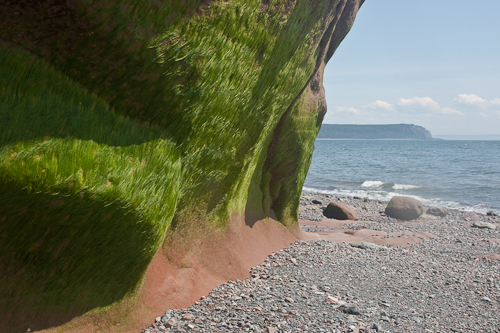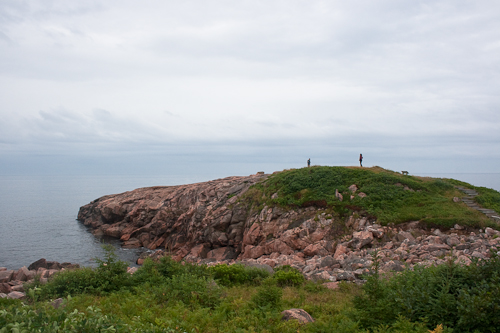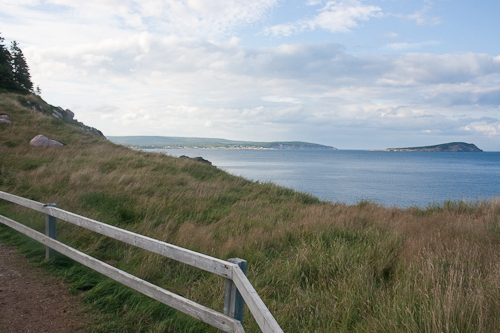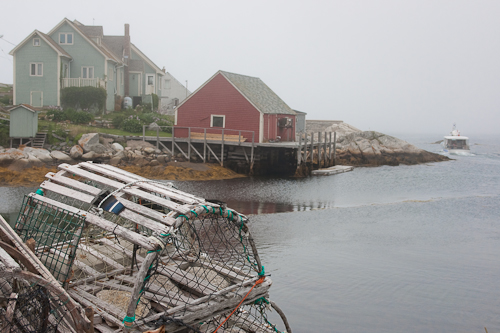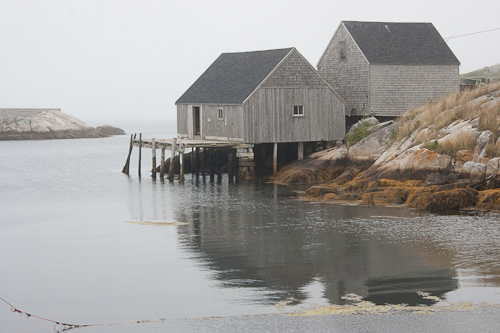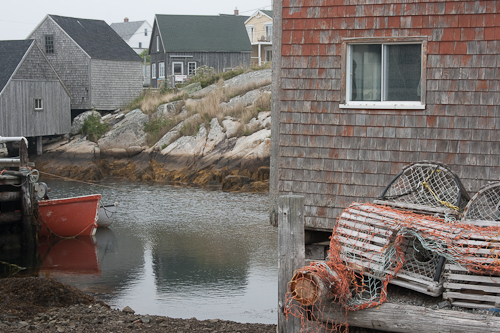(All photos below by Richard Johnson.) While the Canadian Maritimes are bracing themselves from Snowmaggedon 2015, we find someone who actively seeks out winter culture. Turning his attention from his usual commercial assignments, architectural photographer Richard Johnson travels coast to coast across Canada’s expansive landscape to photograph ice fishing huts.
For the last 8 years, Toronto-based Johnson has photographed 725 ice huts in 9 provinces. He shoots these wintry scenes on overcast days, so as to avoid shadows. When you factor in weather and time to scout out locales, he is left with only 2 weeks a year to capture these solitary figures.
Each hut is photographed frontally, centred in a square format. The horizon line is a consistent strike across each image, represented by the distant shore or a row of faraway trees. This straightforward "objective" point of view recalls the architectural images or typologies of Bernd and Hilla Becher who documented edifices like cooling towers and storage silos.
The minimalist approach of Johnson's photography invites viewers to compare and contrast the huts’ varying characteristics. Some enclosures are more engineered —a modified trailer tricked out with solar panels—while others are assembled ad hoc —a plastic tarp draped over a frame of two-by-fours. Though they generally adhere to the basic, archetypal house shape, regional idiosyncrasies emerge: 4’x8’ sheet plywood with little embellishment in Manitoba; popular sheet metal in Ontario; porch-fronted log cabins in Alberta.
Some of the quirkiest, most colourful huts can be found in the La Baie des Ha! Ha! region of Quebec. Eccentric decoration —faux wood panelling, sunflower decals, or camouflage— makes them stand out from the pack. Interiors typically contain wood burning stoves, a trough, and vents for cross-circulation. “It’s all about what you can reuse and repurpose,” says Johnson.
There is a broader 'urban' angle here. Temporary settlements of hundreds of ice huts exist in northern Quebec and Manitoba. Johnson’s panoramic series Ice Villages shows the structures in their larger context and how they relate to one another: some are laid out in a haphazard way, others arranged in a systematic fashion. The seasonal communities that sprout up often include hockey rinks, small eateries, and the odd maple syrup kiosk. Fishermen stay for a month at a time, revelling in the camaraderie while they cast their lines in lakes and bays. It is their getaway.
This is an ongoing project. Richard Johnson has yet to visit British Columbia and the territories. In the meantime, Ice Villages is on display at the Bulthaup Toronto showroom through April 2015. www.icehuts.ca









